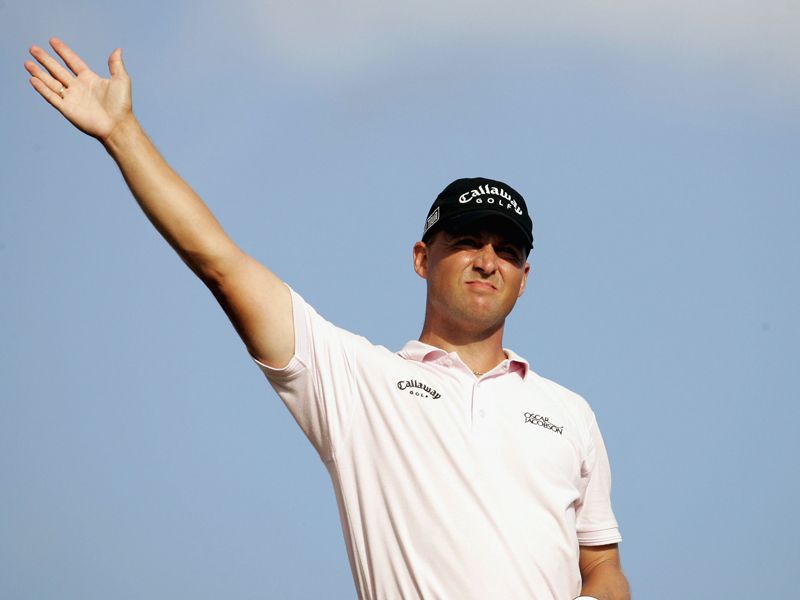Shank or air shot: which is golf's worst shot?
Neither is very desirable, but which fills you with more dread?


Neither is very desirable, but which fills you with more dread? Fergus Bisset and Jeremy Ellwood make their cases for the worst shot in golf.
Shank says Fergus Bisset
The word shank makes my skin crawl. I can barely bring myself to type it. I certainly wouldn’t say it out loud. In the same way actors never mention Macbeth, (they call it “the Scottish play”,) golfers should never utter the dreaded word shank, it’s terrible luck. As a result there are many euphemisms and I’ll endeavour to use some of them from here in.
No shot strikes such fear into golfing hearts and nothing is more debilitating than the terrifying “J. Arthur.” When you contract a bout of them, every iron shot could spell complete disaster. Like a Ninja assassin under the cover of darkness, the shank appears from nowhere and could attack at any time. The “Scottish shot” is just millimetres away from being a reasonable strike but, when the hosel gets involved, all hell breaks loose. You could be just 70 yards short of the green then hit a “Lucy Locket” out of bounds or into a pond. You’ve then got to drop one and the chances are you’ll do the same again. A good score can turn into a no return frighteningly quickly.
An air shot will cause embarrassment as even the most novice golfer expects to make contact with the ball. But, the red face will quickly disappear when you fire the next one 200 yards down the fairway, get on the green with the next then sink the putt for par. The problem with the “Sherman Tank” is it seldom comes as a one-off. You’re generally afflicted by a dose of them and you’ll be shouting, “Fore Right,” before you’ve even stood up to the ball. Alternatively, you’ll start hitting massive pulls in a desperate attempt to avoid the hosel: these can be equally destructive. The psychological damage inflicted by a severe case of the shanks can be permanent. People have quit the game because of acute cases of them.
An air shot happens when you come up and out of the shot. It’s fairly easily avoided, just make a slow and solid swing keeping your eye on the ball and you’ll make contact with it. Apparently there are 13 separate ways to hit a shank so they’re notoriously difficult to fix. In addition, the shank can affect players of all abilities - even the top pros. Ian Poulter has suffered with them and Darren Clarke has been caught on camera producing a “Socket Rocket.”
This is what makes the shank so scary. No matter how good you get at the game, you’re not immune. For a reasonable golfer the air shot will be a complete freak occurrence, something playing partners will laugh at and recount with mirth in the clubhouse. Hit a shank and your playing partners will look to the ground. They won’t discuss it to your face, but will mutter behind your back, “He’s got the J. Arthurs.” You’ll be a condemned man.
Get the Golf Monthly Newsletter
Subscribe to the Golf Monthly newsletter to stay up to date with all the latest tour news, equipment news, reviews, head-to-heads and buyer’s guides from our team of experienced experts.
People will want to avoid you because the shanks are contagious. A number of years ago I went on a tour with my old university golf team to Spain and Portugal. We were all confident young players but one team-member, who’ll remain nameless, took with him a fairly virulent strain of the shanks. By the end of the trip almost everyone had hit at least one “horror from the hosel” and many of us, including me, had succumbed to them totally. I’ve never been free of their ruinous clutches since.
Even if you’ve only suffered from the shanks once they’re in your system. Like a latent disease, they could re-emerge at any point. There’ll always be niggling doubts in your mind. Every shot that comes a little out of the heel will set your teeth on edge. The chances are the “Shermans” will re-appear at the worst possible moment: While taking an iron for safety from the first tee of the Old Course perhaps, or when you’re dormy three up in the final of the club knockout.
So here’s the choice: Take an air shot, laugh riotously with your playing partners then blast the next one towards the green. Or, hit a shank thereby planting a seed of doubt in your mind, leave the course psychologically crippled and lose your game completely for five years. It’s a fairly easy decision: I’ll take a miss every time.
Air shot says Jeremy Ellwood
On the face of it, if ever one of these informed discussions represented Hobson’s choice this would have to be it, since most decent-minded golfers wouldn’t wish either of these two horror shots on their worst golfing enemies. Such is their potentially paralysing effect that after a shank or an air shot there is almost always a period of stunned, embarrassed silence while the perpetrator desperately longs for the ground to swallow him up, and the observers desperately want to laugh, but know they shouldn’t just yet while the hapless victim’s immediate post-shot emotions are still too raw.
That in mind, how can it ever be possible to argue that one is preferable to the other? The aim of the game, after all, is to get the ball into a distant hole in as few strokes as possible, and neither missing it altogether nor striking it with the inappropriately-shaped hosel are ever going help much on that front. You either look down to see the ball still staring mockingly back at you, or up to see it scurrying away crab-like at near right angles – golf’s equivalent of a Ray Wilkins pass.
When it comes to your scorecard, it’s probably true that the air shot is less destructive - after all, you will at least be playing your next shot from exactly the same place and lie. The shank is more likely to send your ball to places the course designer hadn’t even contemplated – dense jungle, another hole miles away technically not in play, or bounding down the road of an adjacent housing estate for some young scallywag to pocket and make off with.
But despite all this, and the shank’s resulting implications for your scorecard, we need to see the wider picture. To clarify a little, for our purposes an air shot is only that one where you make a full-blooded swing but miss the ball completely, with club typically passing either above or to the player’s side of it. It is not that one where the ball is sitting up on a tuft in the rough and your overly cute recovery attempt sends the clubhead sliding right underneath it - that is a grass shot or whatever you want to call it. An air shot is purely the one where the only thing your clubhead strikes is that invisible mix of nitrogen, oxygen and carbon dioxide which sustains us all.
This true air shot represents a frankly stark admission that your swing is not yet proficient enough to guarantee you will at least make contact of some kind. It is, if you like, a non-golfer’s worst shot. The shank on the other hand - sometimes slightly fancifully described as the closest miss to a perfect shot - is very much a true golfer’s miss, with the club coming back into the ball just a smidgen outside the ideal horizontal line.
It is a shot played by real golfers whose set-up or swing plane has got just a fraction out of sync, and is usually only a passing affliction - albeit a potentially damaging one for your morale. When was the last time your saw a professional or good amateur hit a true air shot? Yet you will sometimes see even the very best hit the odd “Sherman”, “J Arthur” or “Lucy Locket” – those self-preserving pseudonyms adopted by golfers as keen to avoid using the actual term as actors are with “the Scottish play”.
The ultimate reality is that after a shank you can look yourself in the mirror and say, “I’ve just hit a horror shot, but it’s only a temporary blip – I’m still a real golfer.” A similarly honest appraisal of an air shot would have to be, “Oh well, I’ve still got a bit of work to do to crack this swing thing – it seems I’m not yet a real golfer.” Hobson’s choice it may be, but wouldn’t you prefer to think of yourself as a real golfer?

Fergus is Golf Monthly's resident expert on the history of the game and has written extensively on that subject. He has also worked with Golf Monthly to produce a podcast series. Called 18 Majors: The Golf History Show it offers new and in-depth perspectives on some of the most important moments in golf's long history. You can find all the details about it here.
He is a golf obsessive and 1-handicapper. Growing up in the North East of Scotland, golf runs through his veins and his passion for the sport was bolstered during his time at St Andrews university studying history. He went on to earn a post graduate diploma from the London School of Journalism. Fergus has worked for Golf Monthly since 2004 and has written two books on the game; "Great Golf Debates" together with Jezz Ellwood of Golf Monthly and the history section of "The Ultimate Golf Book" together with Neil Tappin , also of Golf Monthly.
Fergus once shanked a ball from just over Granny Clark's Wynd on the 18th of the Old Course that struck the St Andrews Golf Club and rebounded into the Valley of Sin, from where he saved par. Who says there's no golfing god?
-
 Former Masters Champion Angel Cabrera Wins PGA Tour-Sanctioned Event Days Before Augusta National Return
Former Masters Champion Angel Cabrera Wins PGA Tour-Sanctioned Event Days Before Augusta National ReturnThe 2009 Masters winner claimed his maiden PGA Tour Champions victory at the James Hardie Pro Football Hall of Fame Invitational
By Mike Hall Published
-
 Anthony Kim Posts Best Ever LIV Golf Finish After 16-Shot Turnaround
Anthony Kim Posts Best Ever LIV Golf Finish After 16-Shot TurnaroundThe LIV Golf wildcard carded a five-under 67 in the final round in Miami to finish T29 - his best finish in the League
By Mike Hall Published